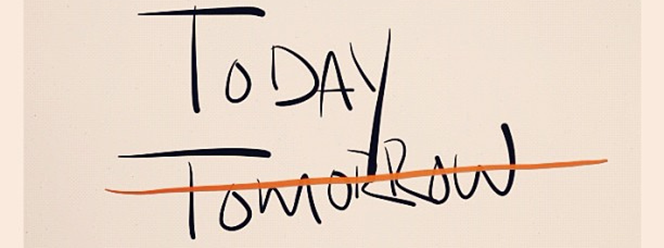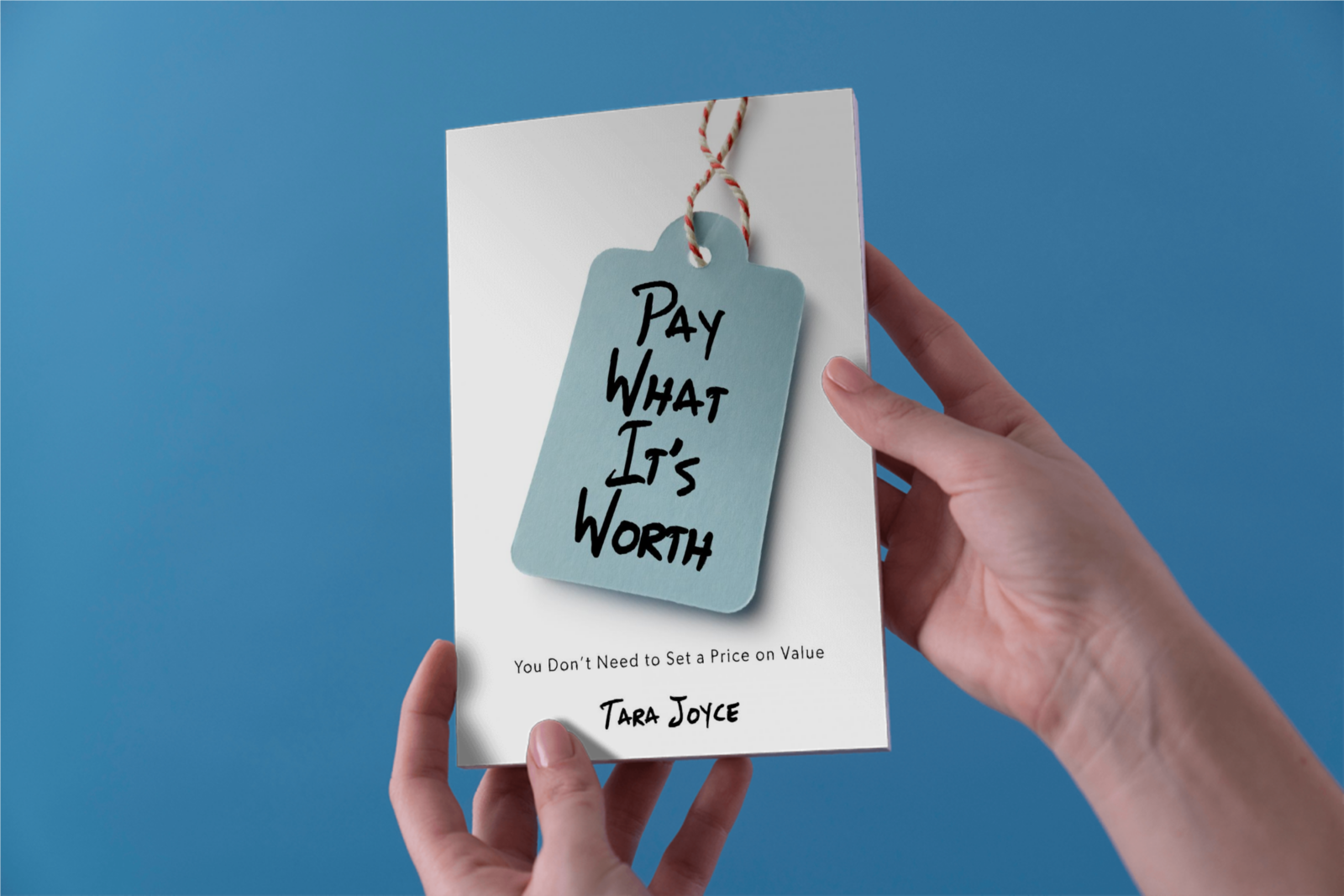
by Tara Joyce | Dec 4, 2015 | Personal Branding

It’s About Sharing.
While the web is a powerful tool for developing our personal brand, it’s important to remember that the web isn’t primarily a medium for information, marketing, or sales. It’s a place for people to meet, talk, create, disagree, rant, and love.
In a similar vein, authentic marketing is about creating conversation and connection. You cultivate this by sharing what you care about, and what you know.
Putting this understanding together, that the web is a medium to connect with people, and marketing is a means for creating connection, we can conclude personal branding is about using the resources you have available to share your authentic signal, your perspective of the world, and trusting your right people will connect with the unique value your expression creates.
Four other things I think I know about personal branding are:
1. It’s a table for two.
2. The more value in your signal, the stronger it will be.
3. Your point of view matters.
4. There is no demand for your message.
photo credit : Lena

by Tara Joyce | Oct 2, 2015 | Cultural Creativity

There is a time and a place for everything, and this includes how you present yourself. For knowing how to behave properly in a variety of situations and doing so, rather than limiting you, gives you a choice in the presentation you create.
When you know your audience and manage your behaviours with them, you’re able to choose how best to get your message across in order for it to have the greatest impact. Knowing how to best present yourself connects you with your right people. For your knowledge is power—and knowing how to sell yourself is powerfully magnetizing.
To have presence, you need to be present to your audience.
If you aren’t present to your audience and how you behave with them, you’ll likely find yourself in an extended process of trial and error, unable to connect your goals with your audience’s. Rather than playing this marketing game, you can instead, by understanding and playing your roles at the appropriate moments, skillfully navigate your way through the obstacles of communication, and consistently reach your goals—and your right people.
Knowing how to present yourself is knowing how to communicate. Your ability to sell your goals through the strong presentation of them is a crucial skill—as it provides you with a choice in the roles you take, and the presence you create. When you’re present to your presence, you know the time and the place for everything in your life.
photo credit: Chris Florence

by Tara Joyce | Dec 8, 2014 | Innerpreneurship, My Journey | What's On My Mind, Personal Branding

There’s a growing phenomenon in Business, specifically in Marketing and Branding trends, of increasingly emphasizing the importance of telling your story — or more truthfully, selling your story.
This concept confuses me.
Asking me what my story is confuses me. You knowing what your story is confuses me.
When I’m asked what my story is, for instance, I may think about my “Innerpreneurial” story just to help my mind focus, but even then I fragment into a million directions. Do I want to share about getting my business starting? Do I want to share about reclaiming my artist and overcoming my creative and mental blocks? Or do I share how I’ve managed my home when both my husband and I are entrepreneurs? What about how I’ve needed to and have completely redesigned my life and world? Where and what part of my life experience is the part that sells?
Maybe this whole story business is suppose to confuse me. Maybe there’s benefit for me to be confused and feeling unsure. Maybe there’s benefit to you seeming clear in your story, and I, not. Maybe then I will more easily buy your story.
Maybe I’m to be confused by the idea that I have one powerful story to tell and sell, and that I can neatly fit my life and my experiences into it. Maybe that’s the point. To present life, or me, or my product, as more simple and clear, together and whole, than your life currently is. Maybe then you will buy the story I’m selling and telling.
There are so very many experiences and learning within me that when I attempt to present you with just one, I wholly feel the incompleteness of the perspective I am presenting. This feeling leaves me wondering, how valuable is it for us to be attached to our own and others stories? What value do we get from these stories we repeat about our Self and others?
There are so many potential stories within us, the ones we attach to and share, what do they say about us and how helpful are they?
photo credit: Venture Vancouver

by Tara Joyce | Oct 27, 2014 | Cultural Creativity, Pay What It's Worth Pricing

I like to think about money as an idea in the form of credit. To get in the money game, I need to build up my credit. To build up my credit, I need to work on my inner and outer relationship with my self and money.
My Outer Credit Work:
- identifying & communicating the value I offer (marketing my self and my business)
- growing my wealth (creating opportunities for higher pay and more abundance)
- caring for my wealth (managing my money and my self)
My Inner Credit Work:
- connecting with the value I offer and the abundance of wealth I possess (transforming my thoughts, feelings, beliefs, attitudes, and actions about money and my self)
As I practice with Pay What It’s Worth and not setting prices, I’m noticing the system naturally supports me in doing my inner and outer work. It supports me in clearly identifying where I still have work to do in improving the quality of my thoughts about my self and money. When I feel something isn’t working in my business and/or in an exchange with my customer, I have an opportunity for inner work and outer work. My business is a mirror for my relationship with my self and money, and my customer is a powerful guide in showing me what is working in this relationship, and what is not. My customer’s feedback and behaviour in our business exchange, and my satisfaction with it, highlights where my thoughts and actions are adding value and where they are not. How am I building my credit? How am I taking from it? If I don’t feel fairly valued, I explore how I am creating this imbalance in my relationship and I work to correct it.
Psychology is to money what an engine is to a car, and my motives, my drivers to action, determine my results. My thoughts about money determine where I go with it, the quality of my ride and my response, and how fast I travel. If I want to live and love abundantly, I must be working on thinking abundantly. As I work at increasing the quality of my thoughts, and in turn my actions, my wealth increases. As I learn to value my Self and how I am of service more wholly, my customer naturally does too. This is the work and the reward of building my credit.
photo credit: Matt Jiggens

by Tara Joyce | Jul 30, 2014 | Cultural Creativity, Pay What It's Worth Pricing

Economic theory is based on the assumption of scarcity – why is that? Aren’t we, collectively, always creating and printing more money? It’s not a limited resource, so why do we use it like it is?
We can’t run out of it. It’s not clean water. Or pandas. We make it, and we can always make more of it. So why should we believe and act like it’s going to run out?
I make a conscious choice to live in a world of abundance, not scarcity. And that includes money.
In Paying What It’s Worth for the value you receive, you shift the traditional supply curve (based on scarcity) to one based on abundance. In not setting prices, you remove the false ceiling that’s been placed on your value, maximizing your return potential, and removing any self-imposed limits to it.
So why not forget that economy of scarcity story? Its plot is full of holes.
photo credit: Paul Nicholson










